Opinion
The Gray Market: Why the Most Exhausting Aspect of Miami Art Week Is the Most Important to the Market’s Future
Our columnist returns from the froth and frenzy of Miami Art Week thinking about spectacle versus sustainability.
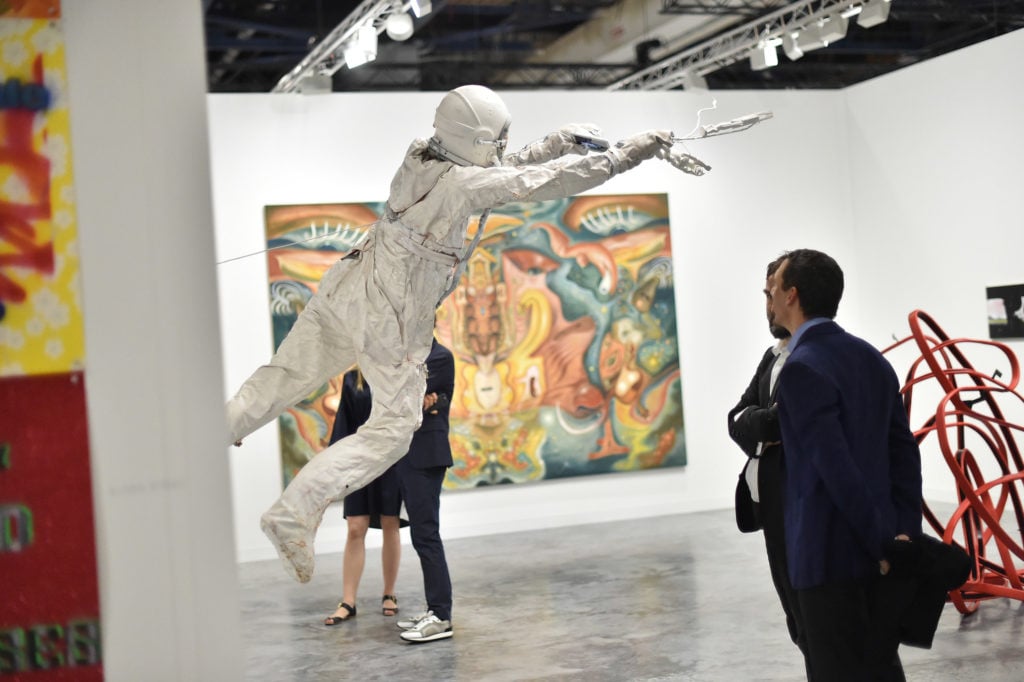
Our columnist returns from the froth and frenzy of Miami Art Week thinking about spectacle versus sustainability.

Tim Schneider

Every Monday morning, artnet News brings you The Gray Market. The column decodes important stories from the previous week—and offers unparalleled insight into the inner workings of the art industry in the process.
This week, reflecting on another south Florida art gauntlet…
After five and a half days of Miami Art Week, my main thought about the event as I left on Saturday evening was simple: “This is unsustainable.”
This idea in itself isn’t innovative, obviously. In fact, I find it difficult to believe that anyone could experience the weeklong, nearly 24/7 blitz of fairs, off-site events, pop-up shows, sponsored parties, panel discussions, and other various happenings without coming to a similar conclusion.
To compare participating in Miami Art Week to trying to drink from a fire hose doesn’t even do it justice, because at least a fire hose only shoots one substance in one direction. It’s more like lashing yourself to the hood of an SUV before the conveyor belt drags it through the controlled chaos of an automated car wash. Just when the cannons are done blasting you with hot water laterally, a cascade of foam coats you from above, a forest of oak-tree-sized buffers starts whipping you at 300 rpm, and the blaring red lights flooding the tunnel signal that, no matter how badly you want to get out, you’re trapped inside until the cycle is done with you.
The week’s 360-degree pandemonium shouldn’t be surprising, given that the industry’s supply side continues expanding like a bag of Jiffy Pop bombarded by microwaves. Studio and curatorial studies programs at universities and for-profit institutes produce ever more art-focused MFA grads every year. Galleries on the growth treadmill need more and more work to fill ever more, larger permanent locations and art-fair booths around the world. Corporations convinced of the branding allure of art commission an endless stream works, “activations,” and events to chase the cool.
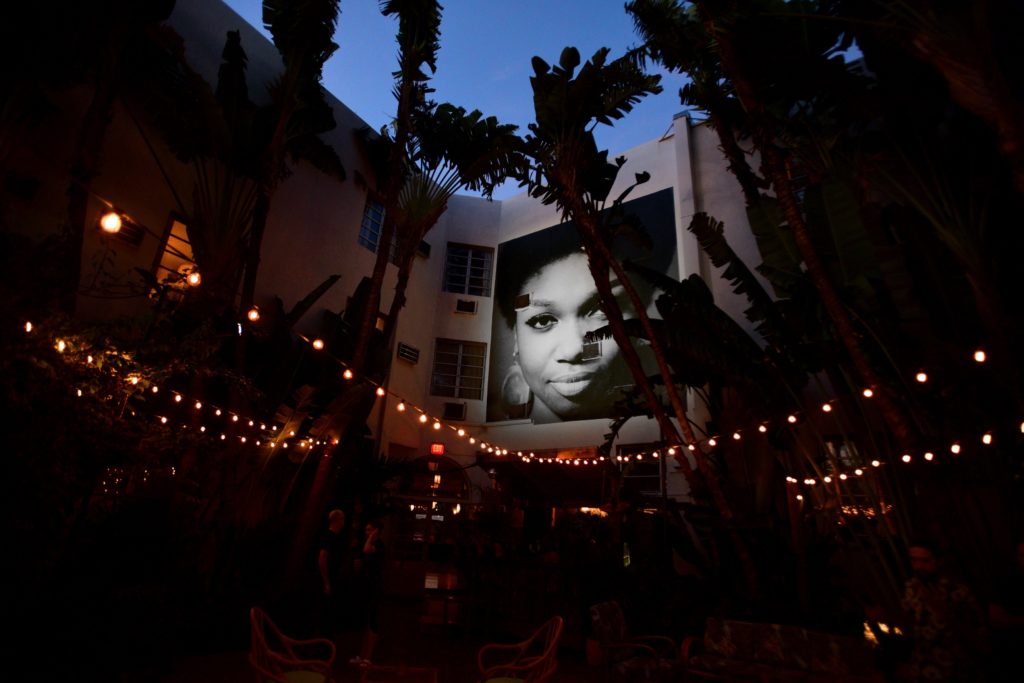
The installation by Theaster Gates at Prada Mode Miami. Photo by Bryan Bedder/Getty Images for Prada)
And yet, even as more and more options compete for your attention each Miami Art Week, there is little evidence to suggest that the number of actual buyers is growing in tandem. To the contrary, data for the November auctions in New York over the past decade suggest that the sector’s multibillion-dollar annual totals increasingly depend on a stagnant or shrinking number of sales at steadily higher prices. And although I trust annual art-market reports that include the private sector about as much as week-old shrimp cocktail, it’s still telling that none of those studies has ever shown any kind of significant growth by value beyond what they found before the 2008 recession.
This stasis would seem logical if the world economy wasn’t simultaneously minting an army of new plutocrats around the globe annually. But Credit Suisse’s latest Global Wealth Report found that 2.3 million new people around the world reached millionaire status since the previous year’s edition, and the global millionaire population has tripled since 2000.
In theory, this means more people should be able to buy more art every year. Instead, we seem to be moving in the opposite direction, even as the quantity of art-centered events approaches the level of the ridiculous.
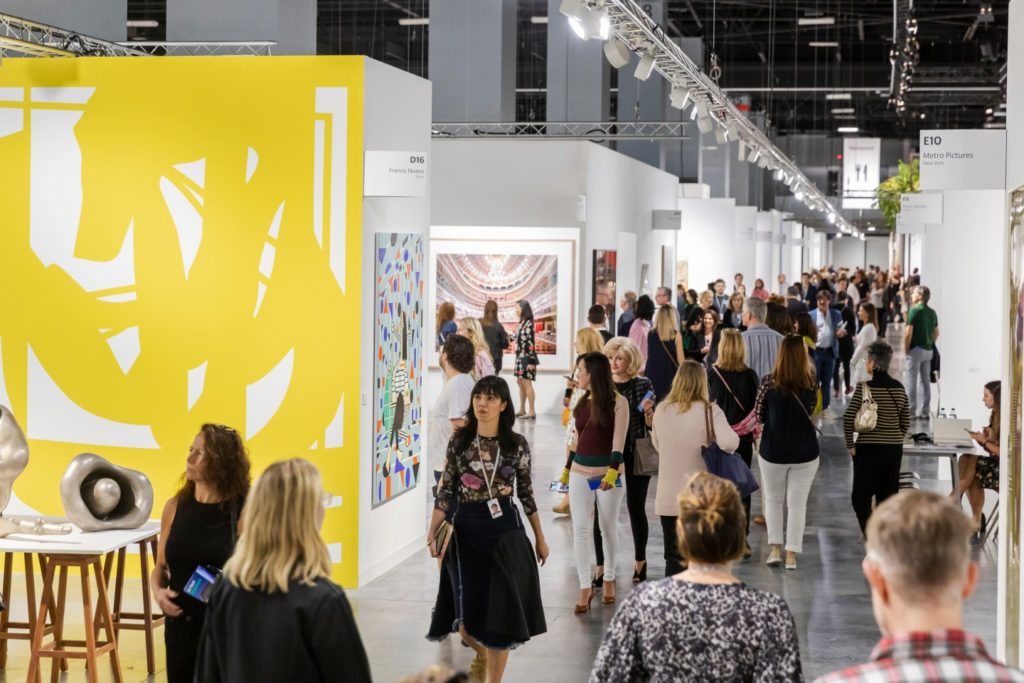
Art Basel Miami Beach 2018. Image courtesy Art Basel Miami Beach.
There’s an old adage in the industry that a collector is someone who keeps buying artwork even after their walls are full. In contrast, during my years in the gallery sector in Los Angeles, so much business I was a part of came not from collectors, but from an ever-churning group of speculators and decorators.
By “decorators,” I mean something more than literal interior decorators (though plenty of those enabled my paycheck to keep coming, too). I mean people who bought just enough to ensure, say, the new house in Malibu felt lived-in and elegant, then slammed the brakes.
I used to think the importance of speculators and decorators—a group I’ll shorten to the snappier “specs and decs”—were more a trait of the still-young Los Angeles market than a regional manifestation of a global trend. Now, I’m not so sure.
In classic Gray Market fashion, thinking about this issue at the airline gate yesterday reminded me of a business profile on meal-kit delivery startup HelloFresh I read earlier this year.
Along with competitor Blue Apron, HelloFresh seemed to be impossible to escape in my everyday life at the time. Their sponsorships and discounts fronted every other podcast in my queue, their ads appeared in every subway car I mashed into, and their boxes of pre-measured ingredients arrived every week for my neighbors and colleagues. So I was under the impression that the market for their services was booming.
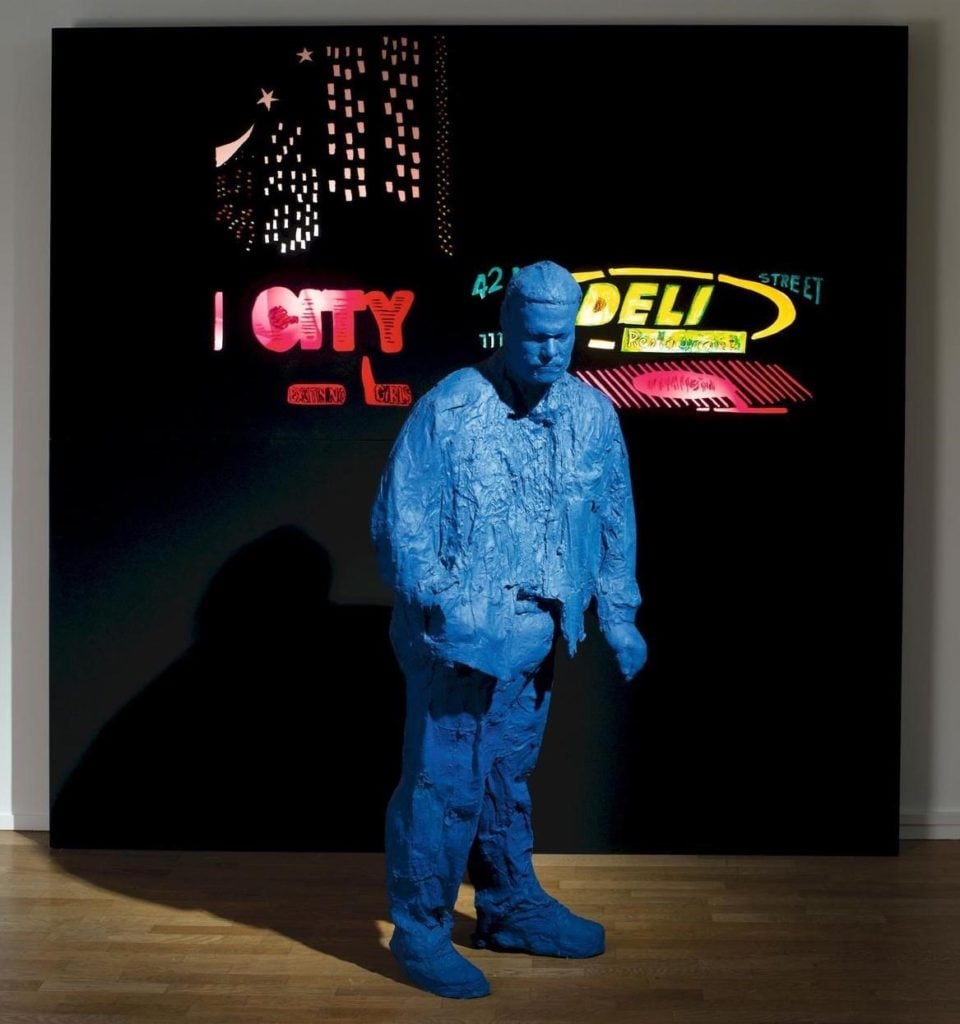
George Segal, 42nd Street Deli (1999). Courtesy of Galerie Templon.
However, the data in the story told a different tale. It turns out that a shockingly low number of customers actually keeps a subscription to HelloFresh or Blue Apron for any substantial amount of time. Instead, these startups depend on churn, i.e. the ability to quickly replace every cancellation with a new customer. According to third-party data passed along by Burt Helm of Inc.:
Nearly half of subscribers of both services cancel within a month. Just 20 percent stay on as long as six months. By the end of the year, meal-kit companies are lucky if they’ve retained 15 percent of their original subscriber base, and the numbers dwindle from there.
So HelloFresh and Blue Apron have to advertise everywhere and offer great discounts to first-timers, because history has proven that almost none of their existing customer base will stick around for the long term. And the more these startups grow, the more customers they need to churn to keep the repo man at bay.
Hence, the all-out advertising blitz. It doesn’t mean that business is good. It just means it’s good enough for the optics to trick you.
I think the same relationship is, and has been, playing out for some time in the legacy art market (by which I mean the types of galleries, dealers, and auction houses consistently covered in trade reporting). Sure, a small percentage of committed collectors keeps buying, and a few new ones grow into the role.
But the majority of the sales come from continuously churning specs and decs. It would be the simplest explanation for how the world economy has produced millions of new rich people every year, but art sales have remained more or less stuck in place for a decade. And it would also lead us back to the madness of Miami Art Week.
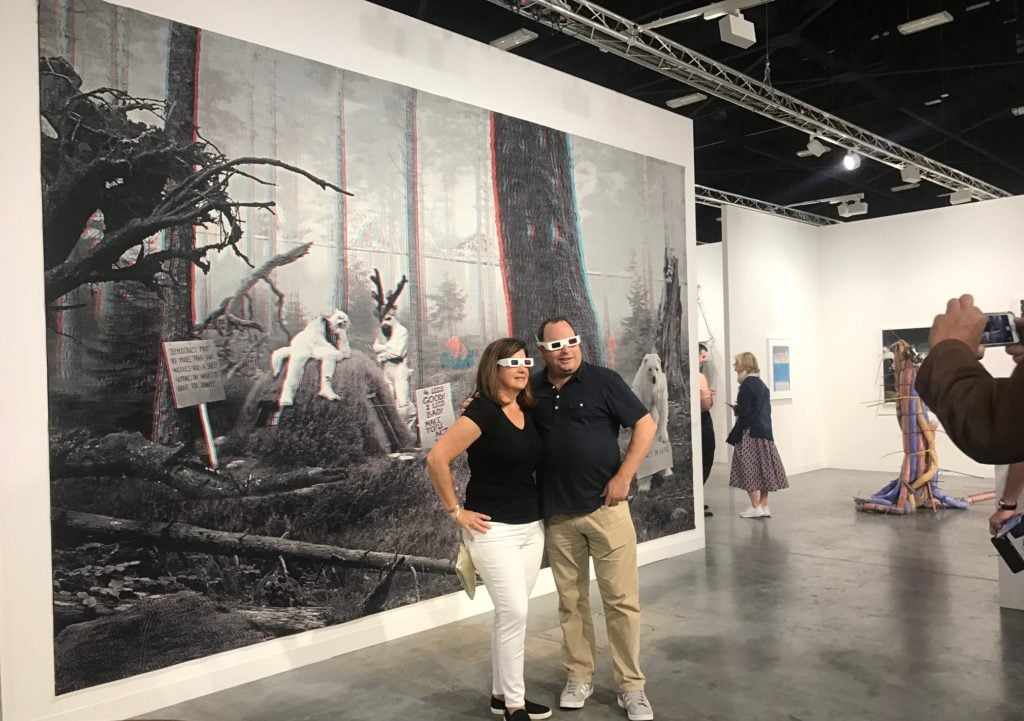
Visitors at Andrew Kreps Gallery booth in front of work by Goshka Macuga. Photo: Julia Halperin.
Here’s the thing about specs and decs: Even if they aren’t planning on acquiring any new work, they usually still want to go to all the openings, dinners, and parties for a long time. Art has also been a magnetic part of pop culture for decades, and its draw only seems to be growing. That, in turn, influences so many non-art brands to commission artists for what they hope will become high-visibility and/or high-value pieces of cultural cachet.
All of these factors collide during Miami Art Week. Just because way more people may not be buying artwork, it doesn’t mean way more people don’t want to participate in the social experience of artwork.
This makes the week something like the industry equivalent of a Shepard Tone, an auditory illusion whose pitch sounds like it’s rising forever but never actually goes anywhere. (Explanation and use cases here, including the sound design for the endless stairs in Super Mario 64, which drove me insane when I was 13.) Like a Shepard Tone, the frenzied scale of Miami’s events can easily convince people that the market is exploding, when in reality sales are just running in place.
Maybe churning specs and decs can keep the art-sales industry stable forever, at least at the very top and very bottom of the hierarchy. But if the fastest, and perhaps only, organically growing audience for art is more interested in being around it for a week, a few days, or even a night at a time rather than in owning it for a high price for much longer, what does that mean for everyone else?
As we roll into 2019, I get the sense that I’ll be thinking about this issue a lot. How many people with actual stakeholders in the market will do the same is a separate question.
That’s all for this week. ‘Til next time, remember what Jason Isbell sang: The right thing’s always the hardest thing to do.